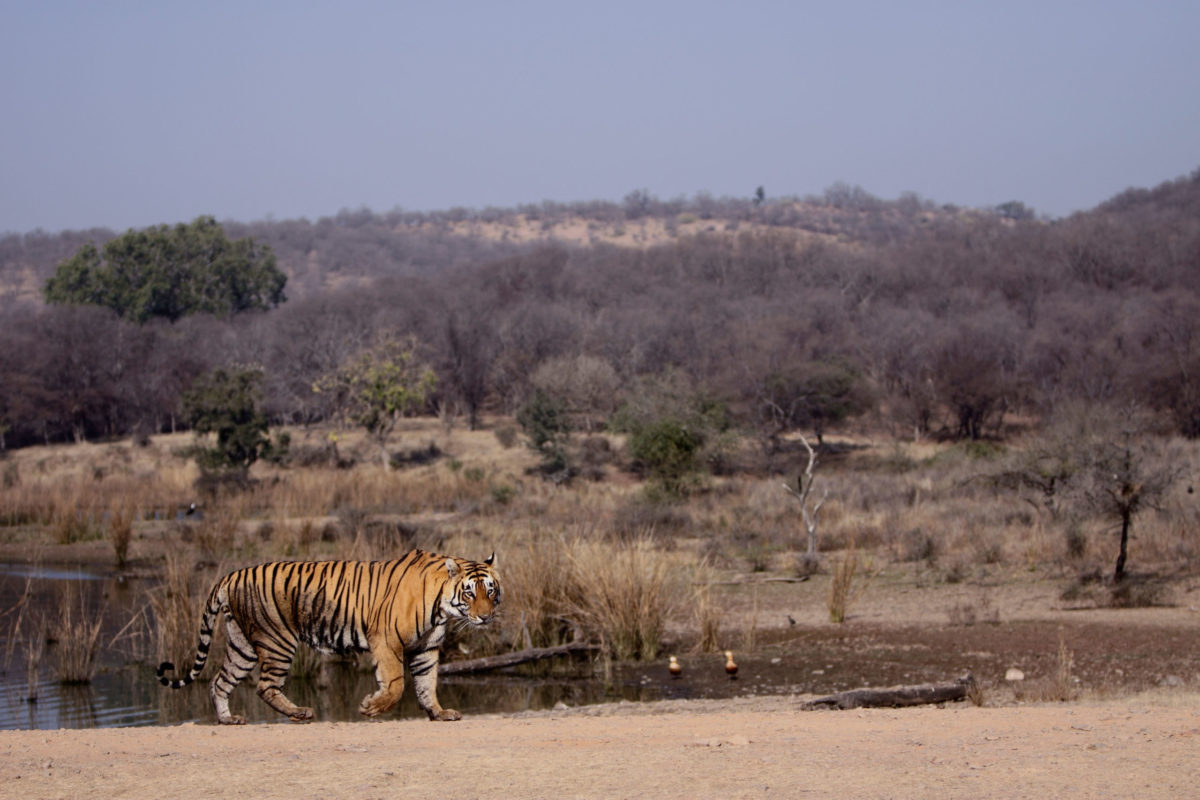2022 is the Year of the Tiger in the Chinese zodiac. In 2010, the last Year of the Tiger, leaders of the 13 countries where tigers were then thought to survive in the wild gathered in St Petersburg, Russia, to make a historic commitment to the future of the species. The aim of the 2010 Global Tiger Summit was to create an action plan to double the species’ global population – then estimated at around 3,200 – by the next Year of the Tiger.
Now that time is here, has the plan succeeded? As the world marks International Tiger Day today, can those 13 countries celebrate a historic conservation achievement?
The answer, as so often in conservation, is complicated. Some countries have achieved genuine success. Last year, conservationists celebrated as Nepal announced it had almost reached the goal of doubling its wild tigers, recording an estimated 235 individuals in a 2017-18 survey, up from its 121 estimate in 2009.
Cautious numbers, complicated reality
One week ago, the International Union for Conservation of Nature – the world’s premier authority on wild species’ threatened status – released an updated assessment for the tiger. While the species is still classified as ‘Endangered’, the new assessment, compiled from the latest data, estimates the global wild tiger population at around 4,500 individuals.
In a press release, the big cat conservation organisation Panthera, which led the new assessment, suggests wild tiger numbers have stabilised, and may be increasing, largely thanks to successful conservation efforts in South Asia. Such conclusions must be cautious because, due to changes in surveying methods, this figure cannot be directly compared to earlier population estimates. Panthera cautioned that the new higher estimate is “partly due to improvements in or a more complete counting of the species”, and that previous assessments used “highly conservative population estimates or underestimates”.
Still, the news is cause for real celebration among conservationists. Wild tiger numbers are growing in protected areas in India, Nepal and Thailand, the result of years of dedication and hard work in the face of unrelenting threats.

Tigers in freefall across Southeast Asia
But the new headline population estimate risks masking a sad and often forgotten fact: tigers once roamed from Turkey to Korea; from Pakistan to Bali. Today they survive in pockets of their former range, concentrated in South Asia because they have been driven to extinction almost everywhere else.
Of the 13 countries that pledged to double their wild tigers in 2010, the tiger is now considered extinct in three: Vietnam, Cambodia and Laos. The world’s biggest cat proved no match for unrelenting hunting pressure from those poaching it for its body parts, as well as the indiscriminate snaring that threatens the integrity of forest ecosystems across mainland Southeast Asia.
The picture is not much rosier in Myanmar or Malaysia. In the former, as few as 22 tigers are estimated to survive, despite large areas of intact forest. Poaching has driven Malaysia’s tigers to the brink of extinction, with the current estimate of 100 individuals a steep and tragic fall from an estimated 500 in 2010. Even if this earlier figure was an overestimate, the fact that so few tigers survive in Malaysia’s forests is a sad indictment of a failure to stop poaching and quell demand for tiger body parts. These are sold for luxury decorations and jewellery, and for use in traditional medicine, primarily to buyers in China and Vietnam.
A clear government line from consumer countries that buying or using tiger body parts is illegal and unacceptable has been striking in its absence
In Russia too – where Siberian tigers are the northerly surviving outpost of a range that once spanned East Asia – poaching continues to threaten the boreal big cat. In China, aside from a tiny but growing population along the Russian border, wild tigers are essentially extinct.
Undoubtedly the main reason is that there are still people willing to spend significant sums for the body parts of dead tigers. Precedents have shown that properly enforced bans in demand markets, accompanied by clear and well-circulated messaging, can reduce demand for wildlife products – see the disappearance of big cat skins from fashion runways, and the recovery of the Tibetan antelope after crackdowns on shahtoosh (a fine wool made from the antelope’s hair). But this has never truly happened in the main demand markets for tiger parts.
The terrible logic of ‘tiger farms’
In China, even after use of tiger bone in traditional medicine was banned in 1993, the government has presided over a huge growth in tiger ‘farms’, where thousands of tigers are raised in conditions that mean they could never be released into the wild. Several of these ‘farms’ have been alleged to sell tiger bone wine. Then in 2018, a government notice appeared to legalise use of tiger bone in medicine. Its status remains unclear.
The government of Laos, where illegal trade in captive-bred tigers has flourished, pledged to phase out tiger farms in 2016. This simply hasn’t happened. As smuggling of body parts from wild and captive tigers continues, a clear government line from consumer countries – that buying or using tiger body parts is illegal and unacceptable – has been striking in its absence.
Hard work ahead of the Global Tiger Summit
There are interesting plans afoot that could, if successful, bring the wild tiger back to parts of Asia where it has been hunted to extinction. Discussions about reintroducing tigers to Cambodia have circulated for several years, though the country’s forests continue to face ecological wipe-out from snaring. In Kazakhstan – decades since the death of the last Caspian tiger – work is underway to set the stage for the tiger’s return, including the reintroduction of potential prey species.
Exciting as these possibilities may be, they should not distract from the hard work needed to ensure wild tiger numbers in South Asia continue to inch upwards. Poaching has not gone away – the Wildlife Protection Society of India counts 56 tigers as having been poached or seized from illegal trade in the country in 2021 alone. Continued investment in protecting habitat and anti-poaching is essential, as recent gains can very quickly be undone.
To see Asia’s apex predator surviving in South Asia alone would be a tragedy for ecosystems and cultures across the continent
Moreover, as they prepare updated conservation plans to be brought to the next Global Tiger Summit later this year, India, Nepal and Bhutan must plan for success. As tiger reserves reach capacity, investment is sorely needed in habitat corridors and community engagement programmes. The needs, safety and perspectives of the people living alongside a potentially deadly predator must be at the forefront of policy design.
Beyond South Asia, tiger range countries must look at what seems to be working: well-protected habitat, well-resourced anti-poaching programmes and a clear message that tigers are worth more alive than dead. To see Asia’s apex predator surviving in South Asia alone would be a tragedy for ecosystems and cultures across the continent. It cannot be allowed to happen.


![A wild Bengal tiger in Bandhavgarh National Park in Madhya Pradesh [Image by: Mark Smith/Alamy]](https://dialogue.earth/content/uploads/2015/01/wild-tiger-300x200.jpg)






